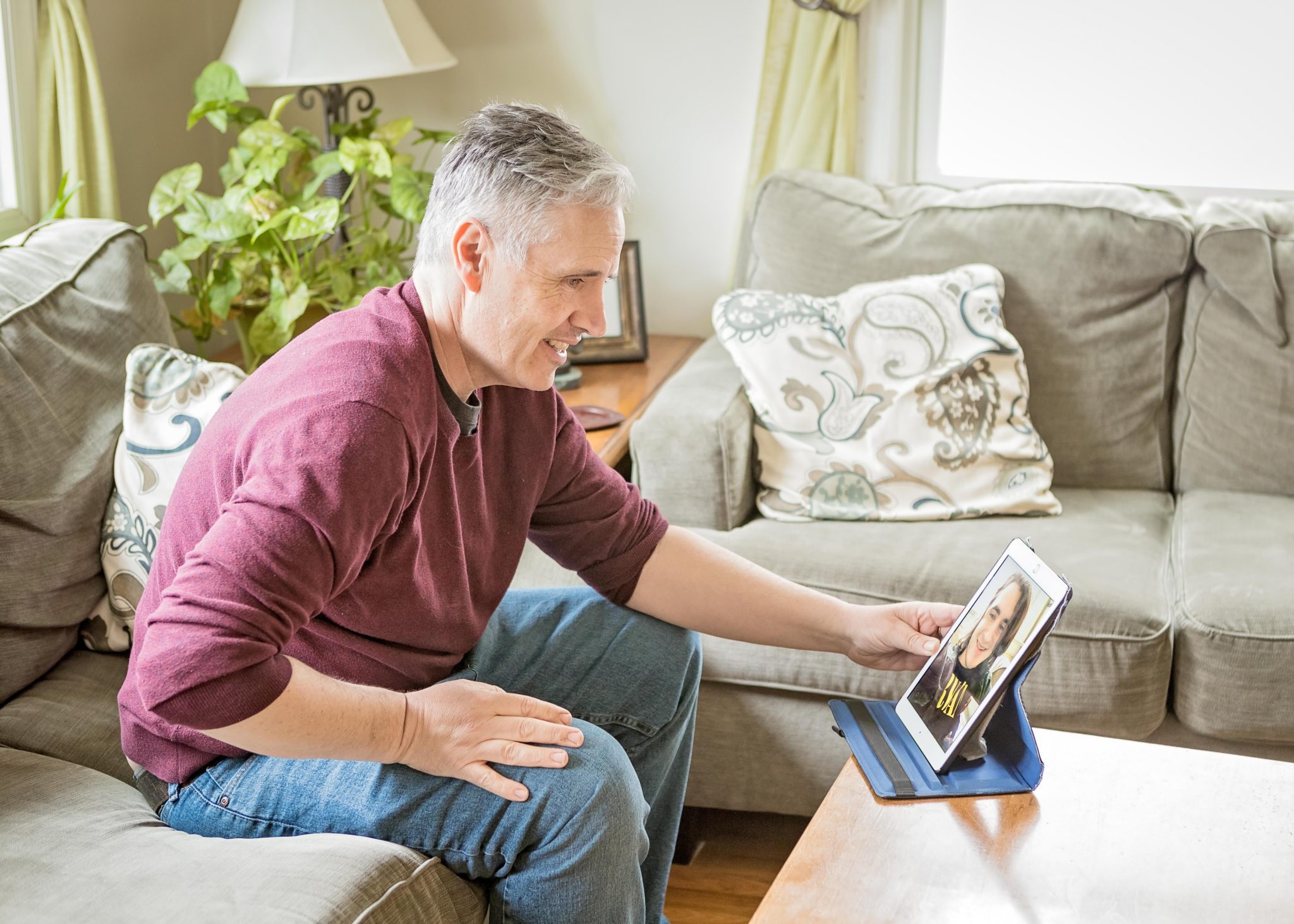Whether it’s a sick parent, an elderly family member, an aging sibling, or a dear friend in need, caregiving can feel like an overwhelming responsibility—especially if you’re having to help from a distance. According to the National Institute on Caregiving, a long-distance caregiver is an individual who lives one hour or more away from their loved one.
You’re not alone. The number of people becoming caregivers has increased over the years. In fact, “…over 34 million adults [in the US] are serving as a caregiver for a senior,” according to a study by The National Alliance for Caregiving. This number is going to dramatically increase as the baby boomers age.
Statistically, the majority of primary caregivers are women in their late forties to early fifties; 85 percent of which are providing care for a parent or parent-in-law.
Some of the tasks that a long-distance caregiver can assist with are the following: managing finances, scheduling appointments, dealing with insurance, communicating to other family or community members, and supporting primary caregivers through respite breaks. Other helpful things can include helping with legal needs, ordering things online, and connecting with your loved one frequently.
According to The National Alliance for Caregiving, around 15 percent (or 5 million) of caregivers live more than an hour away from the person they’re caring for—a number that’s expected to continue to grow.
Additionally, it’s very common for caregivers to spend their own money on care-related costs (things like travel to and from their loved one, groceries, and paid help) A. 2016 AARP study found that family caregivers spent an average of nearly $7,000 a year of their own money—more than $7,400 in 2019. That spiked to nearly $12,000 – $12,700 when adjusted for inflation—for caregivers who lived an hour or more from the care recipient. Costs generally were slightly higher if those receiving the care were 50 or older.”
Due to all of these responsibilities and expectations, it’s no surprise that caregivers are experiencing stress, anxiety, and grief. The National Alliance for Caregiving and AARP have found that 47 percent of long-distance caregivers report emotional distress, as compared to those who live less than an hour away (28 percent). As a long-distance caregiver, it is natural to experience a range of emotions including guilt, sorrow, anger, and anxiety. Working with a therapist like myself is a helpful way to feel supported during your time as a caregiver.
As a long-distance caregiver, it’s easy to focus on what you can’t control—the progression of the disease, for example. Instead, let’s talk about ways you can help reduce your own stress while ensuring your loved one is set up in the best possible way, from afar.
Setup Your Foundation
The first thing you may wish to establish is an emergency plan. Have it written down and posted somewhere in your home and in your loved one’s home, with the steps to be taken should an emergency arise. This may include ensuring someone local can get into the home (is there a spare key hidden somewhere?), having essential paperwork completed and accessible. Be sure to include your name, the name of your loved one, important contact information, and a direct line to the local hospital or ER.
If you haven’t already discussed money management, you may wish to request access (or help them set up and use online banking, as well as, to monitor for scams) so they can benefit from automated services—like scheduled food delivery, reliable weekly house cleaning, and medication refills.
Establish a Local Team
Having a small, trustworthy group of people, who are already located closer to your loved one, is a great way to ensure there is support if an issue arises.
Your team may include neighbors, nearby extended family members, a home care company, a financial planner, a therapist, a pharmacist, and primary physician; a food delivery service, and a home care cleaning.
Have a Communication Plan
As you’re deciding frequency and the method of things like visits, phone calls, emails, video chats, etc. it’s also a great time to consider incorporating other forms of technology as well. Think of daily essentials that will make it as easy as possible for you to keep in touch. From afar, you can also work with your friends and family to set up a schedule to keep your loved ones in contact with others, as well, to help provide a watchful eye.
You and your loved one may wish to install in-home monitoring systems, outdoor motion sensors, activity tracking devices (like a FitBit), and automatic pill dispensers. Also, consider what installments into one’s home are needed to keep your loved one safe, such as grab bars. Use technology to your advantage if your loved one is able to do so, but remember if it brings more frustration or stress to either one of you than it is worth, then traditional phone calls are still suitable.
Take Care of Yourself Too
Finally, it’s critical that caregivers prioritize their own mental and physical health as well! Caregiving is often long and unpredictable, you being at your best will help you make calm and rational decisions. It’s no secret that caregiving can be a stressful and often a very emotionally taxing experience.
To maintain your mental health it’s best to work with a therapist who is knowledgeable in caregiving, grief, death, dying, and loss. A therapist in this field can be great for helping with both practical decision making and processing emotions.
It would be an honor to work with you. To learn more visit: https://marchickcounseling.com/services
—

